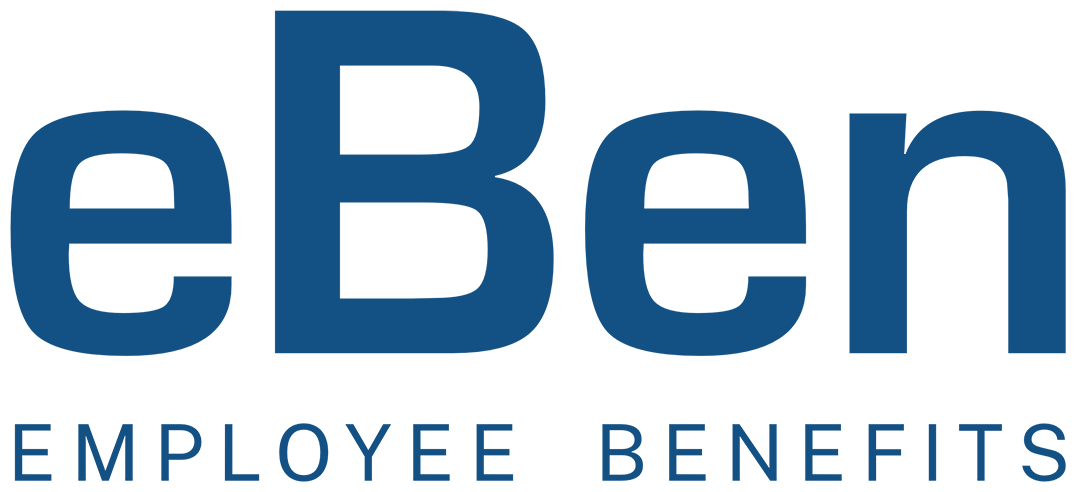Employers sponsoring self-funded group medical plans are responsible to file and pay the PCORI fee annually. Employers sponsoring fully-insured group medical plans are assessed this fee by their health insurance carriers in the monthly premium payments.
Read on for more information.
PCORI Fee Background
The PCORI fee is a requirement under the Affordable Care Act to fund the Patient-Centered Outcomes Research Institute, focusing on clinical effectiveness research. It was scheduled to end for plan years ending on or after October 1, 2019. However, a federal spending bill passed by Congress in 2019 reinstated the PCORI fees and filings for another ten years, through 2029.
The PCORI fee is filed and paid annually on IRS Form 720 (Quarterly Federal Excise Tax Return).
For employers with self-funded medical plans filing Form 720 only to report PCORI fees, the Form 720 instructions clarify that a Form 720 should not be filed for the first, third, or fourth quarter. As such, employers are advised to use the 2nd quarter Form 720 to file and pay the PCORI fee by July 31, 2025. The information is reported in Part II of Form 720. Additionally, the Form 720 instructions confirm that deposits are not required for PCORI fees and employers are not required to use the IRS’s electronic tax payment service to pay the fees.
Since Form 720 is a tax form, rather than an informational return form such as Form 5500, employers and/or their accountants/tax advisors must prepare and file it. The IRS permits employers to deduct PCORI fees as an ordinary and necessary business expense under Internal Revenue Code (IRC) Section 162(a).[1]
For self-funded group medical plans, the fee is calculated using the average number of covered lives under the plan and the applicable rate for that plan year, outlined in the table below and also accessed on the IRS website here.
- Employees
- Dependents
- COBRA beneficiaries
- Retirees
PCORI Fee Calculation
The PCORI fee is calculated on the average number of covered lives under an applicable self-funded group medical plan. The IRS provides the following three alternative methods to determine the average number of covered lives for a plan year[2] under a self-funded group medical plan for PCORI fee calculation purposes:
-
Snapshot Method:
This method involves adding the total number of lives covered on a designated date during the first, second, or third month in each quarter of the policy year (or selecting an equal number of dates per quarter), then dividing the total by the number of dates on which a count was made.
There are two sub-methods within the snapshot method:
- Snapshot Count Method: The plan sponsor counts the actual number of lives covered on each designated date.
-
Snapshot Factor Method: The plan sponsor counts:
- The number of participants with self-only coverage on the designated date,
- PLUS the number of participants with coverage other than self-only on the designated date, multiplied by 2.35.
-
Form 5500 Method:
This method uses a formula based on the number of participants reported on the Form 5500 for the plan year.
Employer plan sponsors can use the Form 5500 method only if they file the Form 5500 by the PCORI fee due date for that year (typically July 31).
Note: This method cannot be used if the sponsor files a Form 5500 extension.
-
Actual Count Method:
This method involves calculating the sum of lives covered on each day of the plan year, then dividing that total by the number of days in the plan year.
- This is generally the least practical method for calculation.
Your eBen account team will provide a detailed analysis of which calculation method is most suitable for your self-funded plan.
Other Health Plans/Arrangements & PCORI Fees
Click here for an IRS table detailing which common health plans/arrangements are subject to the PCORI fee (also summarized in the non-exhaustive table below).
| Type of health plan/arrangement | Subject to the PCORI Fee (Yes/No) |
|---|---|
| Self-funded group medical plan | Yes (employer plan sponsor responsible for filing and payment) |
| Fully insured group medical plan | Yes (but health insurance carrier responsible for filing and payment) |
| Standalone dental or vision plan | No |
| Health Reimbursement Arrangement (HRA) | See details below for special HRA & FSA rules |
| Flexible Spending Arrangement (FSA) | See details below for special HRA & FSA rules |
| Health Savings Arrangements (HSAs) | No |
| Hospital indemnity or specified illness benefit plans | No |
| Employee assistance programs, disease management programs, or wellness programs | No, as long as the program does not provide significant benefits in the nature of medical care or treatment. |
| On-site medical clinic | No |
| Self-funded medical covering primarily employees who are working and residing outside the United States | No |
Health Reimbursement Arrangements (HRAs): For HRAs, the IRS outlined two special PCORI fee-related rules:
- HRA offered with fully insured medical plan: The plan sponsor must pay the PCORI fee with respect to the average number of lives covered by the HRA in addition to the fees that will be paid for by the insurance carrier for the fully insured plan. The HRA’s covered lives will be determined using the one life per participant rule. As such, the plan sponsor is not required to include as covered lives any covered dependents in the HRA.
- HRA offered with self-funded medical plan: The HRA is not subject to a separate PCORI fee as long as the HRA and the self-funded group medical plan have the same plan sponsor and have the same plan year. In this case, the plan sponsor will be required to pay the PCORI fee only once with respect to each covered life under the HRA and the other plan, because the same life covered under each arrangement would count as only one covered life under the plan for purposes of calculating the fee.
Individual Coverage HRAs (ICHRAs): Subject to the PCORI fee.
Health Care Flexible Spending Accounts (FSAs): Health Care FSAs are generally not subject to PCORI fees since they typically qualify as excepted benefits.
Similar to an HRA offered with a fully-insured integrated medical plan, the plan sponsor may assume one covered life for each employee with an FSA that does not qualify as an excepted benefit for purposes of calculating the PCORI fee.
Excepted Benefits & FSAs: Health Care FSAs qualify as “excepted benefits*” if they satisfy the availability and maximum benefit requirements outlined below:
- Availability Requirement — Other non-excepted group health plan coverage (for example, major medical coverage) must be made available for the year to the class of participants by reason of their employment.
- Maximum Benefit Requirement — The maximum amount available must not exceed twice the employee’s contribution, or, if greater, $500 plus the employee’s contribution.
*As defined under the Health Insurance Portability and Accountability Act of 1996 (HIPAA)
PCORI Filing & Payment Deadlines
for 2025
As Risk Strategies previously reported last year here, the IRS issued Notice 2024-83 in December 2024, increasing the PCORI fee for plan years ending on or after October 1, 2024 and before October 1, 2025, including plan years ending December 31, 2024, to $3.47 (increased from $3.22).
| Plan Year End Date | PCORI Fee Rate | Filing & Payment Date |
|---|---|---|
| January 2024 | $3.22/covered life | July 31, 2025 |
| February 2024 | $3.22/covered life | July 31, 2025 |
| March 2024 | $3.22/covered life | July 31, 2025 |
| April 2024 | $3.22/covered life | July 31, 2025 |
| May 2024 | $3.22/covered life | July 31, 2025 |
| June 2024 | $3.22/covered life | July 31, 2025 |
| July 2024 | $3.22/covered life | July 31, 2025 |
| August 2024 | $3.22/covered life | July 31, 2025 |
| September 2024 | $3.22/covered life | July 31, 2025 |
| October 2024 | $3.47/covered life | July 31, 2025 |
| November 2024 | $3.47/covered life | July 31, 2025 |
| December 2024 | $3.47/covered life | July 31, 2025 |
Click here for the IRS PCORI Fee Q&A webpage for additional information.
Short Plan Years
The PCORI fee still applies to a short plan year of a self-funded group medical plan. A short plan year is a plan year of fewer than 12 months. The PCORI fee for the short plan year of a self-funded medical plan is calculated by multiplying the average number of lives covered during that plan year by the applicable dollar amount for that plan year.
PCORI Fee Filing Corrections
Employers sponsoring self-funded group medical plans may make corrections to a previously filed Form 720 by filing a Form 720-X, Amended Quarterly Federal Excise Tax Return, including adjustments that result in an overpayment.
Although Form 720X does not specifically identify or refer to the PCORI fees, there is space within this form to include an explanation of adjustments that plan sponsors can use to identify the PCORI fee.
Failure to File PCORI Fees
Even though the PCORI statute and final regulations do not include a specific penalty for failure to file or pay the PCORI fee, it is considered an excise tax. As such, any related penalty for failure to file a return or pay a tax would generally apply under IRC Section 6651.
Note that penalties under Section 6651 for failure to file or pay the PCORI fee may be reduced, or even waived, if the failure is due to reasonable cause and not due to willful neglect.
PCORI Fee Records Retention
Even though the PCORI statute and final regulations do not include a specific record retention requirement, it is reported on Form 720 as an excise tax. The Form 720 instructions direct taxpayers to retain excise tax records for at least four years from the latest of the date the tax became due, the date the tax was paid, or the date the claim was filed.
Employer plan sponsors should be prepared to substantiate the enrollment count and the method used to calculate the PCORI fees through their records since these fees are based on the number of covered lives.
Next Steps for Employer Plan Sponsors
Self-funded plans: For employers sponsoring a self-funded group medical plan (including HRAs), contact your Risk Strategies account team for support with PCORI fee calculations and with any additional questions.
Fully insured plans: As noted above, no action is required for employers sponsoring a fully insured group medical plan since the PCORI fee amount is already assessed by their health insurance carriers in the monthly premium payments.
Form 5500 Reminder: Don’t forget about another important health & welfare plan compliance filing deadline due on July 31, 2025 as well: Form 5500. Click here for more information on the upcoming Form 5500 filing deadline.
eBen is here to help. Contact your eBen account team member with any questions here.
[1] https://www.irs.gov/pub/irs-counsel/AM2013-002-1.pdf.
[2] A plan sponsor is not required to use the same method from one plan year to the next. Treas. Reg. § 46.4376-1(c)(2)(ii).
The contents of this article are for general informational purposes only and eBen makes no representation or warranty of any kind, express or implied, regarding the accuracy or completeness of any information contained herein. Any recommendations contained herein are intended to provide insight based on currently available information for consideration and should be vetted against applicable legal and business needs before application to a specific client.


